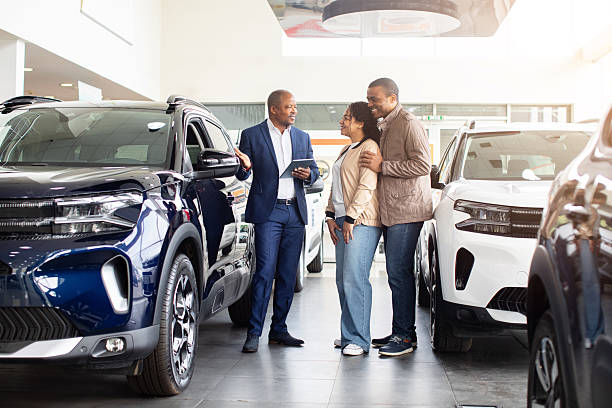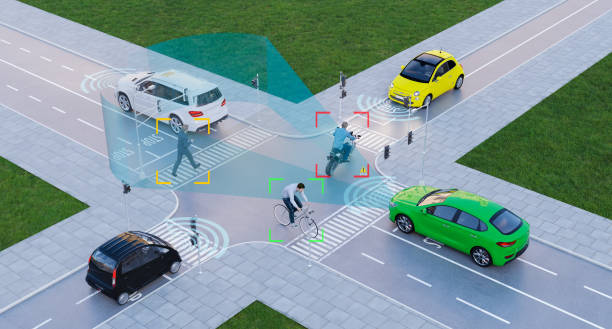Introduction
One of the most discussed subjects in the current technology is self-driving car safety. With the continuous development of artificial intelligence, cars are becoming smarter and more conscious.
They do not simply make our roads a lot easier to drive, these vehicles will make them safer to everyone on the road. But how true is that promise? Let us see the actual effects of self-driving cars on the road safety.
What Are Self-Driving Cars?

Autonomous vehicles or self-driving cars are vehicles that can drive themselves with the help of sensors, cameras, and artificial intelligence. Most of the journey does not make them depend on human drivers. They instead pick up traffic, observe signals and make fast judgment to prevent accidents.
Tesla, Waymo, and Mercedes-Benz are the companies that are leading with this transformation. They have cars that have radar systems, advanced software and real time mapping to ensure that the passenger is safe.
Why Self-Driving Car Safety is an issue?
The human error is leading to road accidents that kill thousands of people every year. The major crashes are caused by speeding, distraction, or fatigue. The issue of self-driving cars safety is important as these machines could contribute to the minimization of such errors.
Autonomous systems do not become tired, distracted, and emotional. They adhere to the regulations unswervingly. This in itself can bring about massive change towards the safeness of our roads in future.
Real-Life Case: What Technology did to save a Life.
The car was a Tesla and it had to be in California in 2023 when a person crossed the road at night and the Tesla automatically stopped. The car could react, when the driver was not able to. Its sensors responded to movement within milliseconds thus averting what could have been a major accident.
An example of such stories is that self-driving car safety is not a theory. It is already saving lives on a daily basis.
Major Characteristics that Lead to better safety in Self-driving cars.
The car driving technology has multiple high-tech features to drive safely.
1. Advanced Sensors
Cameras and LiDAR sensors assist cars to have a glimpse of their surroundings. They are able to recognize vehicles, riders and even tiny creatures on the road- day or night.
2. Real-Time Data Processing
The computer on the vehicle is continually gathering and examining the data to make real-time decisions. This prevents crashes and ensures that they do not hit other vehicles.
3. Predictive Intelligence
Self-driving cars do not merely respond, but they foresee. They are able to predict the future move of the vehicles within their vicinity, which could be sudden braking, or switching lanes, thus, minimizing the risks of accidents.
4. 360-Degree Awareness
The cars being driven by humans are not in full awareness as the self-driving cars do. This enables them to respond to any sudden threat quicker than any human being.
Human Error Reduction: The Largest Leap Forward.
To the global extent, human error is said to be the cause of over 90 percent of road accidents. Safety of self-driving cars is aimed at eliminating this factor. The possibility of crashing due to texting, drinking, or sleepiness is significantly reduced, as relying on data and sensors and using AI can significantly help avoid crashes.
As soon as cars communicate with one another by means of smart, the cars can exchange road information. This generates a safer road movement and reduced road accidents.
Impact Emotions: Saving Families and Futures

Any accident does not only ruin a car, but it ruins lives. Families are deprived of their loved ones, dreams are ruined and futures are altered permanently. Millions of people have hope with the self-driving technology because, someday, the tragedies can be minimized.
It is possible to imagine a world where parents can safely send their teenagers out at night or where drivers driving far distances without fear of getting tired. That is the emotional assurance of self driving car safety.
Problems That Have not Been Overcome
Whereas the developments are thrilling, there are still difficulties.
1. Technology Limitations
Artificial intelligence systems might not perform well during extreme weather or road conditions. Engineers are striving to make them more reliable.
2. Ethical and Legal Questions
Who should bear the responsibility in case an accident is caused by the self-driving car- the passenger; or the manufacturer? These are questions that are still debated worldwide.
3. Public Trust
Not all people stop being afraid of being driven in the car without a driver. Development of public confidence has as much importance as the development of the technology itself.
Corporeality in the World.
A number of cities are in the process of testing self-driving cabs and busses. Waymo has self-driving taxis in Phoenix, which deliver thousands of people safely every week. In China and Europe, the average rates of accidents in the course of similar tests are lower than in the case of traditional driving.
There are also safety regulations and standards that governments are introducing to ensure that these vehicles are not violated by the strict road safety laws.
Learning by mistake in Self-Driving Cars

Contrary to human drivers, self-driving cars get better each time. The cars exchange information with others via cloud networks. Once a car has experienced some unique situation, such as a road block or when a group of pedestrians have just crossed the road, the information is used to manage the situation of other cars in a better way.
It is this group learning that makes the safety of self-driving cars develop at a more rapid rate than conventional education of drivers.
The Future of Road Safety
It is estimated by experts that in one more decade, the streets full of autonomous cars will be much safer than the streets now. Traffic congestions can be eliminated, emergencies will be resolved faster and pollution will reduce because vehicles will move more efficiently.
Eternal victory will be lives saved though. Any little advance in the safety of self-driving cars brings us a step closer to the world where accidents will not be frequent, but rather occurrences.
Final Thoughts
The safety of self-driving cars is a reality that is not only a dream but it is increasingly becoming a reality. Although one can say that there are still some challenges to be overcome, the progress that has been made is incredible. Cars are becoming increasingly competent in protecting people and avoiding tragedy with each software update and a new model.
The future lays on a highway of innovation, empathy and strong wish to be safe. Self-driving cars do not only transform the way we travel but are also defining a world where every trip would be safer and more secure.












Add Comment